► It’s the new VW ID R racer
► Now the fastest EV at the ‘Ring, Goodwood and Heavens Gate
► Already holds lots of records, then
The other day, Volkswagen’s ID R completed a 7:38.585 drive of the 99-corner, 10.906km Tianmen Mountain road, and set a record for it in the process. Now we have the onboard footage…
Happily, Volkswagen has understood we just want to see the performance and sound of its fastest ever marketing tool – and that means there’s no weird camera angles or music here. Instead, you can see and hear the power of Wolfsburg’s ‘racing ambassador’ and it’s violently impressive.
Sure, the Heaven’s Gate road is fairly ‘stop-start,’ but that only accentuates the car’s ridiculous acceleration: the video above looks as though someone is fast-forwarding through a lap, not playing it in realtime.
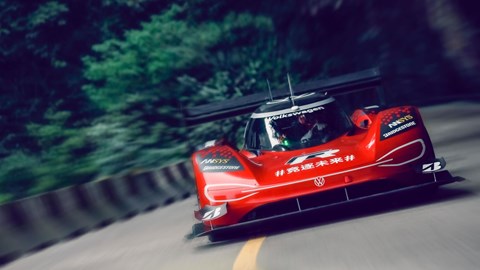
Nurburgring success
Volkswagen’s all-electric ID R has also taken the Nurburgring lap record for an electric car. It logged a time of 6m 05.336sec, destroying that of the NIO EP9 by 40 seconds. VW is now squeezing as much PR and marketing goodness out of its ID R race to smash records, but the car was modified to suit the very specific conditions the Green Hell brings.
The quickest Nurburgring lap times
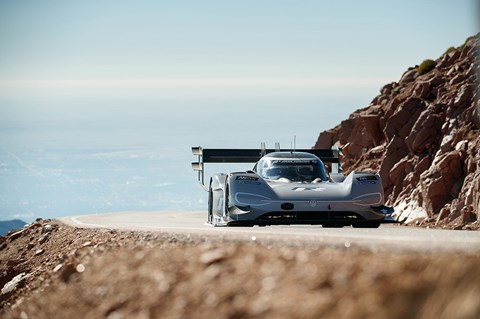
Sorting the set-up
‘After the record on Pikes Peak, the fastest time for electric cars on the Nürburgring-Nordschleife is the next big challenge for the ID R,’ said Volkswagen’s motorsport director Sven Smeets. ‘A lap record on the Nordschleife is a great accolade for any car, whether a race car or a production car.’ To be clear, the ID R is far from a production car, though.
‘Above all, we will modify the aerodynamics of the ID R, in order to cope with the conditions on the Nordschleife, which differ greatly from those on Pikes Peak,’ said François-Xavier Demaison, VW Motorsport’s technical director. Unlike the US classic on Pikes Peak, which starts at an altitude of 2862 metres and ends at 4302, the Nordschleife winds its way through the Eifel region at between 320 and 617 metres above sea level. The iconic German circuit has a very unique characteristic, not least thanks to the long Döttinger Höhe straight.’
Pike Peak success
But first on the list was the Pikes Peak. Volkswagen used its 671bhp ID R to smash the Pikes Peak record last year. Romain Dumas drove the the 12-mile course in just 7min 57.148sec, beating the existing EV record – and also bettering Sebastien Loeb’s all-time record by 16 seconds.
‘Since this week’s tests, we have known that it was possible to break the all-time record. For it to come off, everything had to come together perfectly – from the technology to the driver,’ said Dumas after the record-breaking hillclimb. ‘The ID R Pikes Peak is the most impressive car I have ever driven in competition. The electric drivetrain means that many things are different and I learned a lot during the project.’
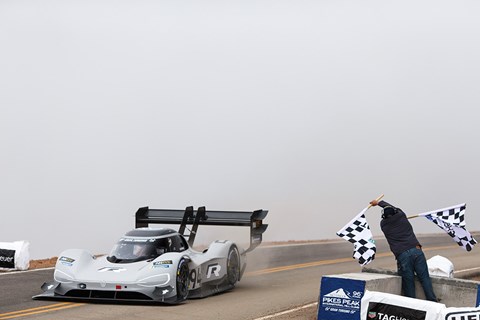
VW ID R: the specs of Volkswagen’s electric racer
As you’d expect from a race car, the ID R Pikes Peak must compromise between weight and power, but its use of electricity makes the balance even more critical. More power is great, but the weight of extra batteries means slower direction change and acceleration. Things you really want when you’re trying to break a record at Pikes Peak.
Read our guide to the best electric cars
Volkswagen thinks it’s found the perfect relationship between top speed, acceleration and weight – and it’s used a range of innovative technologies to do it. The ID R weighs around 1100kg with a driver, and that lightweight figure is achieved by the engineering in two main areas of the car. Firstly, with top speeds not as high as you’d think, VW has been able to use fewer and more compact batteries, and place them next to the driver – the most advantageous place for weight distribution and handling.
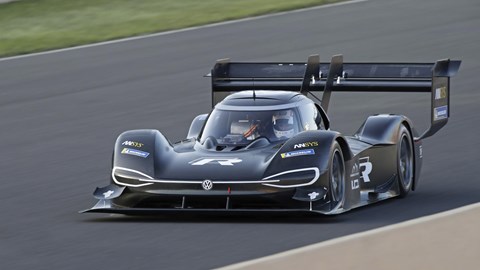
What’s more, the use of weight-saving materials and techniques has kept the car’s structure light. For example, the cockpit of ID R is made using ultra-light carbonfibre – and while some parts are forged from rather conventional steel and aluminum, they’ve been heavily developed to be as strong as possible.
VW hasn’t overlooked anything, and that includes the driver’s overalls. Instead of having the usual sewn-on patches, Romain Dumas will wear a race suit with sponsors directly printed on it. All to save weight…
Aerodynamics
From the outside, the ID R looks like an LMP1 or LMP2 car – but unlike those prototypes, VW’s car doesn’t have a huge stop speed. When taking on the Pikes Peak, the top speed f of the ID R was 149mph – much less then it’s actually capable of. Engineers have therefore been able to pile on the downforce without worrying about reducing top speed. ‘We concentrated mainly on achieving optimal cornering speeds,’ said François-Xavier Demaison, technical director at Volkswagen Motorsport. ‘The entire chassis is designed to generate as much downforce as possible, without causing too much aerodynamic drag.’
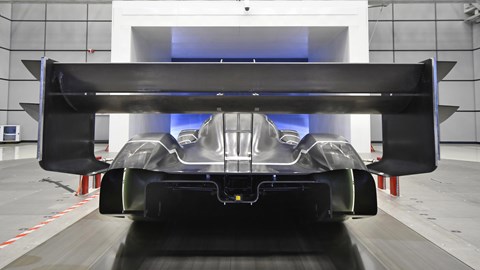
The ID R isn’t actually part of any championships, so it’s not bound to any rules – and that mean VW has had far more scope to design in extra downforce.
As you’d expect from a VW Group project, the ID R project also had a little help from VW’s friends in Weissach. Most of the aerodynamics of the car were proven in the Porsche development centre, and more than 2000 parts were printed to be tested in the wind tunnel.
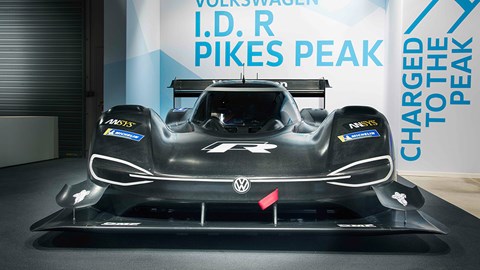
Engine and cooling
VW says the ID R puts out 500kW, or 671bhp, but will only tip the scales at 1100kg. That means it’ll be able to hit 0-62mph in just 2.25 seconds.
Most of the car’s outward appearance is shaped by aerodynamics, and the rest is down to cooling. Interestingly though, VW says the car’s twin electric motors don’t require anything like the same amount of cooling as a similarly powerful combustion engine.